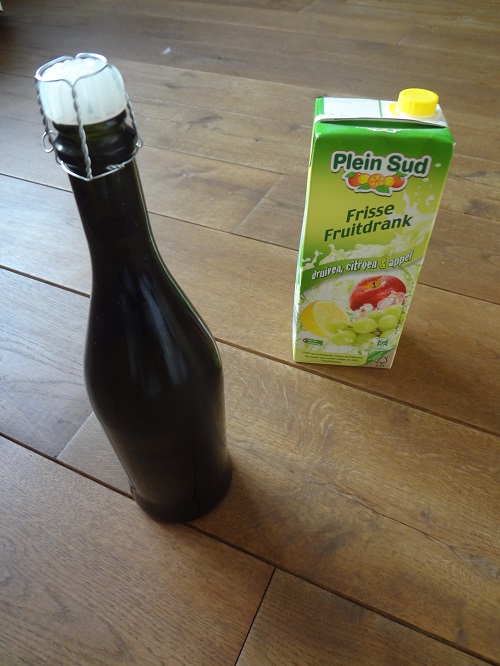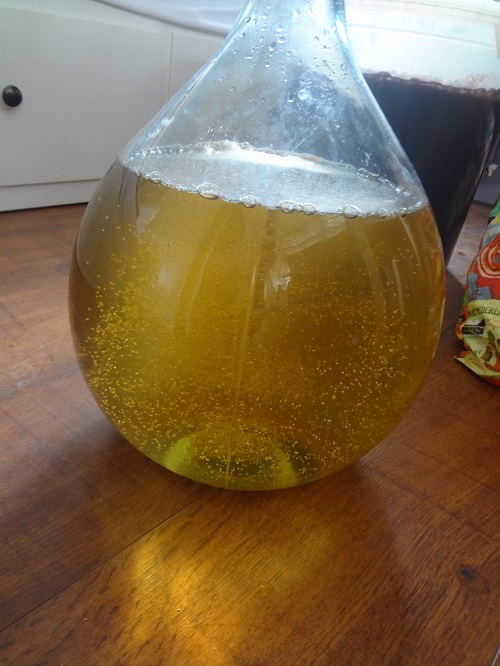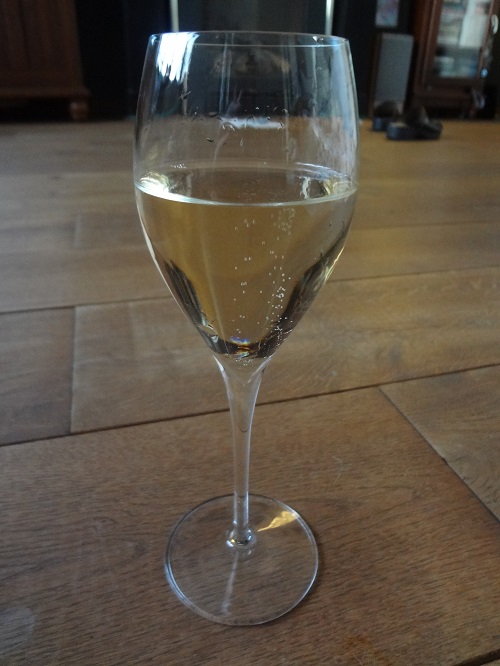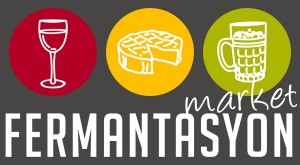The reason that I called this sparkling white wine “Prison champagne” is this image in my head. Champagne is for special occasions. Something you drink at a celebration. I can imagine somebody in jail sipping the bubbles from a fancy champagne glass having a great time because he has made champagne without being caught.
It is one of my favorite wines and I changed the recipe a few times to get the right amount of bubbles. You will be surprised how close this gets to expensive sparkling wines.
A “secret” ingredient that champagne shares with beer is CO2. You may say that there is nothing secret about CO2, but several studies imply that it causes alcohol to get in the blood faster with the obvious light headed result sooner.
The recipe:
Normally I would say that recipes do not work because of the variation in the ingredients but since the main ingredient is a juice that is always the same, you can follow this recipe.
This recipe is for 10 liter.
Ingredients:
- 10 liter Frisfruit juice from Lidl. It is made of concentrated grape/apple/lemon. It contains 110 grams sugar/liter.
- 700 grams sugar
- 30 grams Citric acid
- Champagne yeast (rehydrate in a little water 15 minutes in advance)
- 1 tsp Yeast nutrition (just to keep the yeast happy. Maybe not even necessary)
Method
- Stir all the ingredients in a bucket until they are dissolved and add the yeast.
- After the first fermentation put it in a 10 liter demijohn, leaving most of the lees in the bucket.Let this ferment until it is finished.
- This wine gets clear rather quick. Only a few months…
- Now you have a white wine which has maximum 10% alcohol in it. Probably a little less due to evaporation.
You can drink this, but you can make it in to Prison champagne as follows:
- Rack it into another 10 liter bottle in which you have put 250 grams sugar.
You don’t have to be extremely careful because you would want to have a little living yeast in there. (Yeast will form in the bottle anyway.) - Stir well to dissolve the sugar.
- Immediately after racking clean your champagne bottles and fill them.
- Close them with champagne corks and a wire cage, or with crown caps.
- Store them in a place with a constant (room) temperature to keep the yeast happy.
You can drink this wine after +/- 6 months but if you leave it longer it improves. For some reason the bubbles seem to become finer.
Notes:
- Use champagne bottles. Normal wine bottles are not strong enough.
- If you use crown caps, make sure that your bottles are suited for them.
- The same goes for corks. Not all bottles are the same and some will not close properly.
- Make sure that the bottles are closed properly. If you are not sure, store them in a “safe” place. I can tell you from experience that an exploding cork makes a huge champagne fountain. It is hilarious…… When it happens to someone else!
- The fermentation in the bottle creates the CO2 gas but also leaves a thin layer of lees. Just like in beer making. So you have to handle the bottle carefully when opening and pouring to disturb the lees as little as possible. Champagne yeast forms a thin solid layer but will form a cloud in the last glasses.
To avoid this you can pour the bottle in another empty bottle discarding the lees. - I have 3 different acids but this wine should be made with citric acid only. I tried it also with malic acid but it is a little less fresh.
In case you are interested; Here are the calculations:
Acidity
I measured the acidity and the value was about 4,5. This is a little low so I added 3 gr/l citric acid. Since citric acid is stronger than tartaric acid, the acidity of the finished wine is approximately 8.
Alcohol
In the table you can see that 110 gr/l sugar gives an alcohol percentage of 6,1%. First I added 70 gr/l so the alcohol percentage would be around 10%.
When I bottled the wine I added 25 gr/l again, so the total amount of sugar is 205 gr/l. In the table you can see that this gives about 11,5% of alcohol.
Here is how to use the table.
Cheers
Hans




